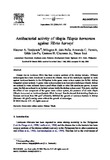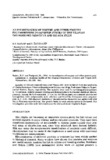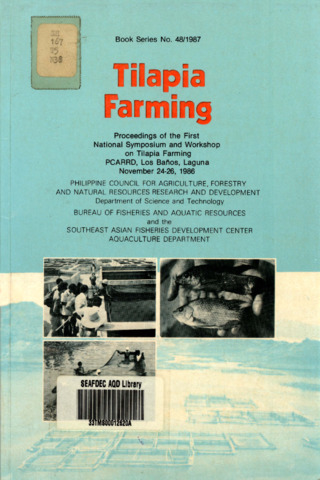Nutrition and feeds of Nile tilapia broodstock and fry
- Global styles
- MLA
- Vancouver
- Elsevier - Harvard
- APA
- Help
View/
Date
1989Author
Page views
5,070ASFA keyword
AGROVOC keyword
Metadata
Perlihat publikasi penuh
Share
Abstract
Studies on some aspects of tilapia and feed formulation conducted at BRS are reviewed in this paper.
The effect fo varying dietary crude protien on growth and spawning frequency of tilapia was determined under laboratory conditions. The weight of male fish increased as dietary crude protein increased; however, weight gain of male fish did not follow a definite due to the asynchronous nature of spawning of the tilipia. Results suggested that when diets contain high-quality protein, and feedig is at station level, the influence of increasing dietary protein on spawning frequency and growth of the females are not cxonsiderable.
In another study, tilapia broodstock in cages and tanks had the best growth and highest fry production when fed a 40% CP diet.
Ipil-ipil leaf mal as a sole or major source of dietary protein caused weight loss among tilapia breeders, drastic reduction in fry production, and eventually cessation of reproduction. The growth of breeders describers decreased significantly with the incorpotion of more than 40% ipil-ipil in the diet.
For Nile tilapia fry, growth was enhanced by availability of high phytoplankton densities in the rearing medium through the culture period. Feeding the fry with unialgal culture of Navicula and Chroococcus resulted in highest gains and survival rates. Chlorella gave poor survival and growth. Rice bran or Moina as feed for the fry was nutritionally inadequate. Their nutritional value improved when both were combined as feed.
Suggested Citation
Santiago, C. B. (1989). Nutrition and feeds of Nile tilapia broodstock and fry. In R. D. Fortes, L. C. Darvin, & D. L. de Guzman (Eds.), Fish and crustacean feeds and nutrition : Proceedings of the seminar-workshop on fish and crustacean feeds and nutrition held on 25-26 February 1985 at UPV, Iloilo City (pp. 40-49). Laguna, Philippines: Philippine Council for Aquatic and Marine Research and Development.
Type
Conference paperKoleksi
- Conference Proceedings [299]
Related items
Showing items related by title, author, creator and subject.
-
Antibacterial activity of tilapia Tilapia hornorum against Vibrio harveyi
Tendencia, Eleonor ; dela Peña, Milagros R.; Fermin, Armando C.; Lio-Po, Gilda; Choresca, Casiano H., Jr.; Inui, Yasuo (Elsevier, 2004)
Disease due to luminous Vibrio has been a major problem of the shrimp industry. Different technologies have been introduced to control the disease. One of the techniques reported to work against luminous bacteria in the ...
; dela Peña, Milagros R.; Fermin, Armando C.; Lio-Po, Gilda; Choresca, Casiano H., Jr.; Inui, Yasuo (Elsevier, 2004)
Disease due to luminous Vibrio has been a major problem of the shrimp industry. Different technologies have been introduced to control the disease. One of the techniques reported to work against luminous bacteria in the ... -
An investigation of enzyme and other protein polymorphisms in Japanese stocks of the tilapias Oreochromis niloticus and Tilapia zillii
Basiao, Zubaida U.; Taniguchi, Nobuhiko (Elsevier, 1984)Samples of Oreochromis niloticus and Tilapia zillii were collected from the hatcheries of Osaka Prefecture Fisheries Experimental Station and Shiga Prefecture Fisheries Experimental Station, Japan, respectively. The samples ... -
Tilapia Farming: Proceedings of the First National Symposium and Workshop on Tilapia Farming, PCARRD, Los Baños, Laguna, November 24-26, 1986
Guerrero III, Rafael D.; de Guzman, Dalisay L.; Lantican, Cecilia M. (Philippine Council for Agriculture, Forestry and Natural Resources Research and Development, 1987)




